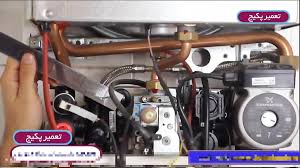When most people hear about “smart windows,” they invariably think of computers. Yet glass has witnessed some remarkable changes thanks to improved abouttechinfo, which allow windows to enhance the home like never before. By significantly impacting the home’s energy efficiency, smart window technology is transforming the way people think about windows. The following technologies and materials are just a few of the advances in window manufacturing today.
Photochromic Technology
Photochromic materials have been employed in eyeglasses, but they can also be used as window glass where they can respond to light intensity. This type of system can block sunlight effectively during the day so that the home’s cooling system is not over-taxed. While some light is allowed, the photochromic materials effectively block out the intensity so that homes literally remain cooler, and consumers pay less in energy costs.
Electrochromic Technology
This type of incredible technology employs electrical ions that seamlessly shift between clear and blue-gray tints. No visibility is lost in the transfer. Electrochromic smart windows rely on electricity to chemically trigger the color change. This material contains conducting oxide that is sandwiched between two pieces of glass. The oxide layers are wired to a power source that provides the required electricity. Of course, people simply notice the great effect of the tinting as well as reduced energy bills.
Gaschromic Technology
Gaschromic material provides a tinting effect that is similar to electrochromic technology. Instead of relying on electricity, however, it employs a gas reaction to achieve its effect. The result is a window that may be transparent or tinted as required. On sunny days, the tinting helps block the light’s energy from heating up the building or home. Consequently, less energy must be consumed to keep the space cool. Moreover, the HVAC system is spared from having to work overtime. (Source: “Window Technologies: Emerging Technologies- Dynamic Windows”, Efficient Windows Collaborative)
Suspended Particle Technology
With this type of technology, a film is sandwiched between two layers of glass. The film is liquid-like and contains millions of particles held in suspension. Like electrochromic material, the film is wired to a power source so it may be activated or deactivated as needed. The particles, when ‘turned on,’ so to speak, are magnetically aligned to allow for more sunlight transmittance. When they are randomly diffused, less sunlight is allowed through the window.
Thermochromic Technology
This type of smart technology responds to the changing dynamics of sunlight intensity. For use in variable tinted windows, this material constantly shifts the light it allows to penetrate through the window. This allows for better temperature control. By blocking the sunlight from the building, this technology prevents the sun from heating up the building’s interior so temperatures remain comfortable. This technology reduces solar exposure and also minimizes glare and even noise.
These technologies are just some of the latest ideas in smart window design. They are already having a profound effect on energy efficiency where they are employed. As more people install them, they’ll discover the value of investing in these windows for their homes as they save on energy costs and, possibly, even add value to their property.

